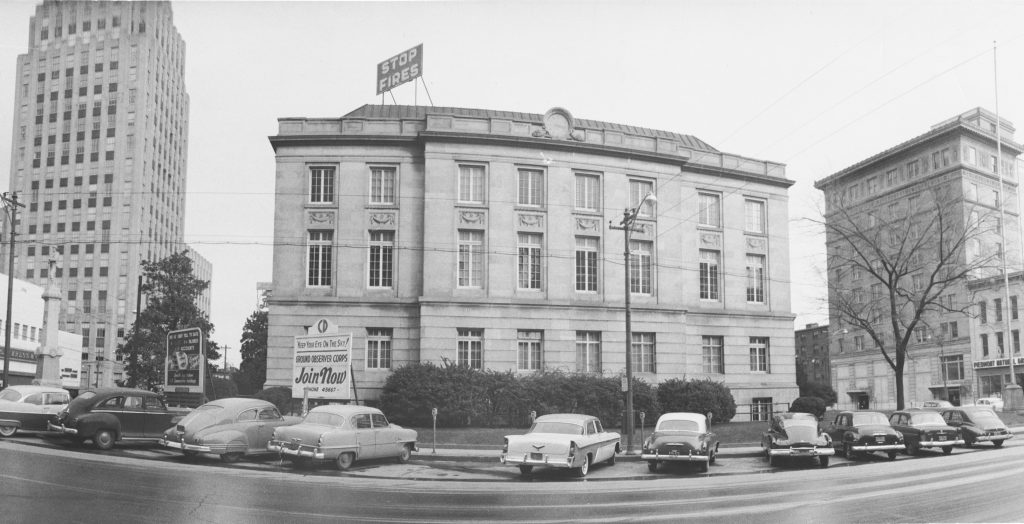
The extensive renovation of the second Forsyth County Courthouse began November 1, 1925. The renovation added 25 feet to the Main and Liberty Street sides, changed the main entrance from Liberty to Third Street, removed the top 30 feet of the tower and most of the 1897 building from the second floor up, and added limestone to the exposed exterior walls.
Two courtrooms were added to the second floor and featured detailed wood paneling, plaster walls and ceilings, marble base and linoleum flooring.
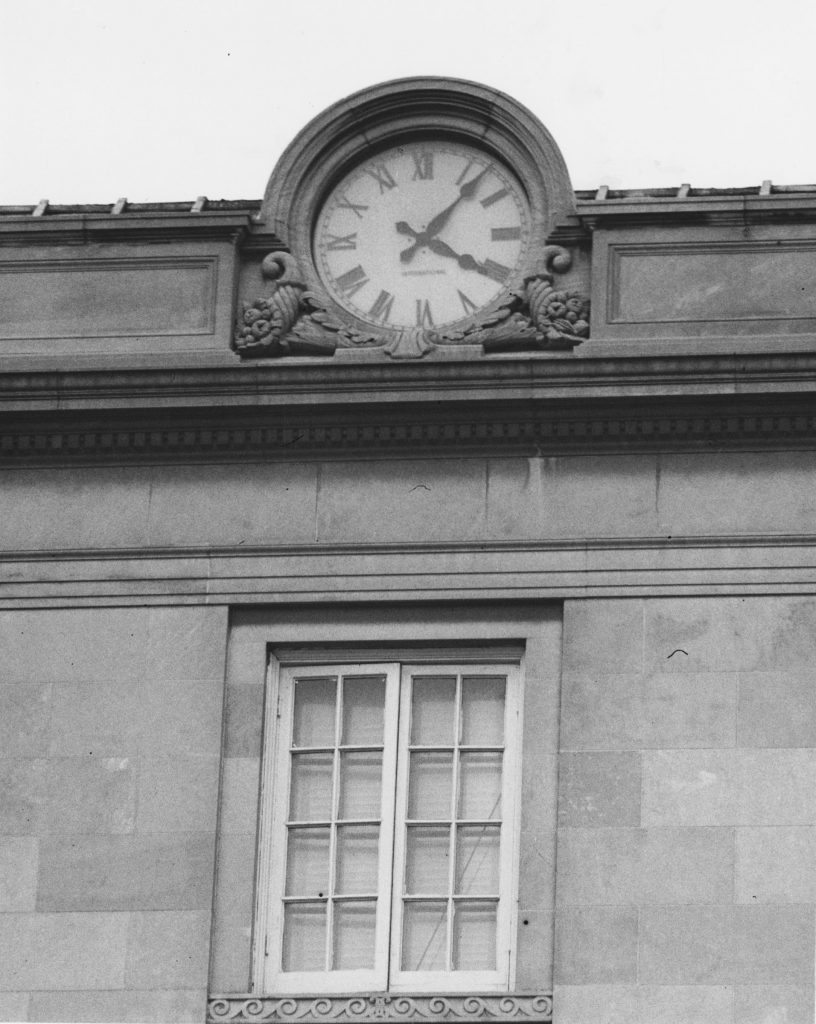
Clock faces were added to the four sides of the building.
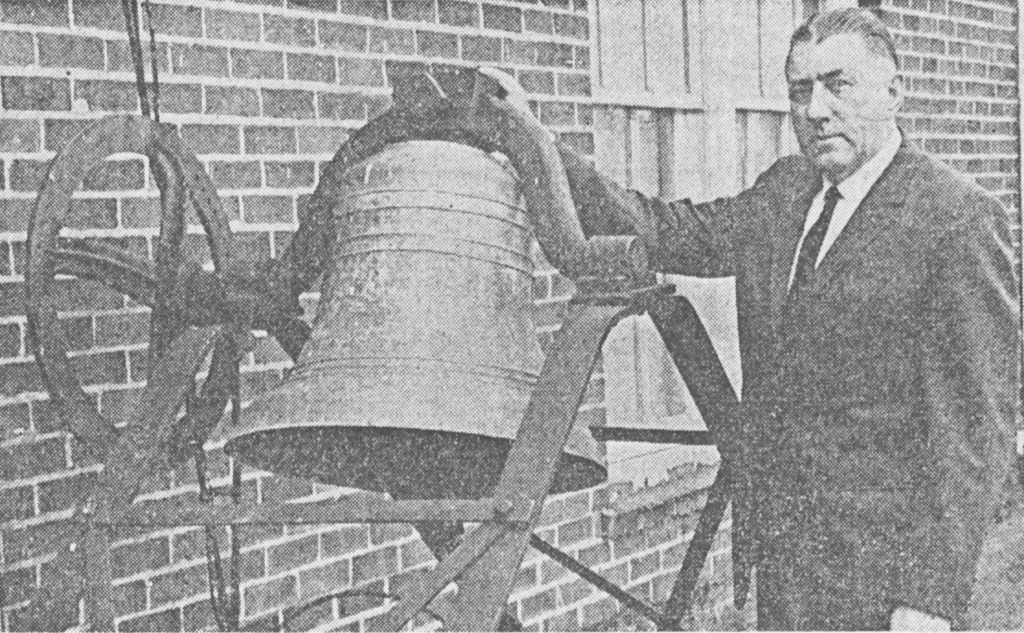
The 300-pound bell from the bell tower was removed and installed on the roof of Griffith School. For many years the bell called the children in from recess. A rope was attached to the bell and it was rung by pulling on the rope that dangled from the bell through the ceiling. An electric bell system that was installed at the school rendered the courthouse bell useless. The principal of Griffith School, R. L. Kuykendall (shown above), wanted the bell to have a place of proper respect. Today, the bell can be seen at the Hall of Justice.
Move-in day for the renovated courthouse was February 9, 1927. And on February 14, 1927, Judge William F. Harding of Charlotte opened civil court in the new courthouse. The Clyde Bolling Post of the American Legion presented a silk North Carolina flag to Forsyth County, to be placed back of the judge’s chair at each term of court.
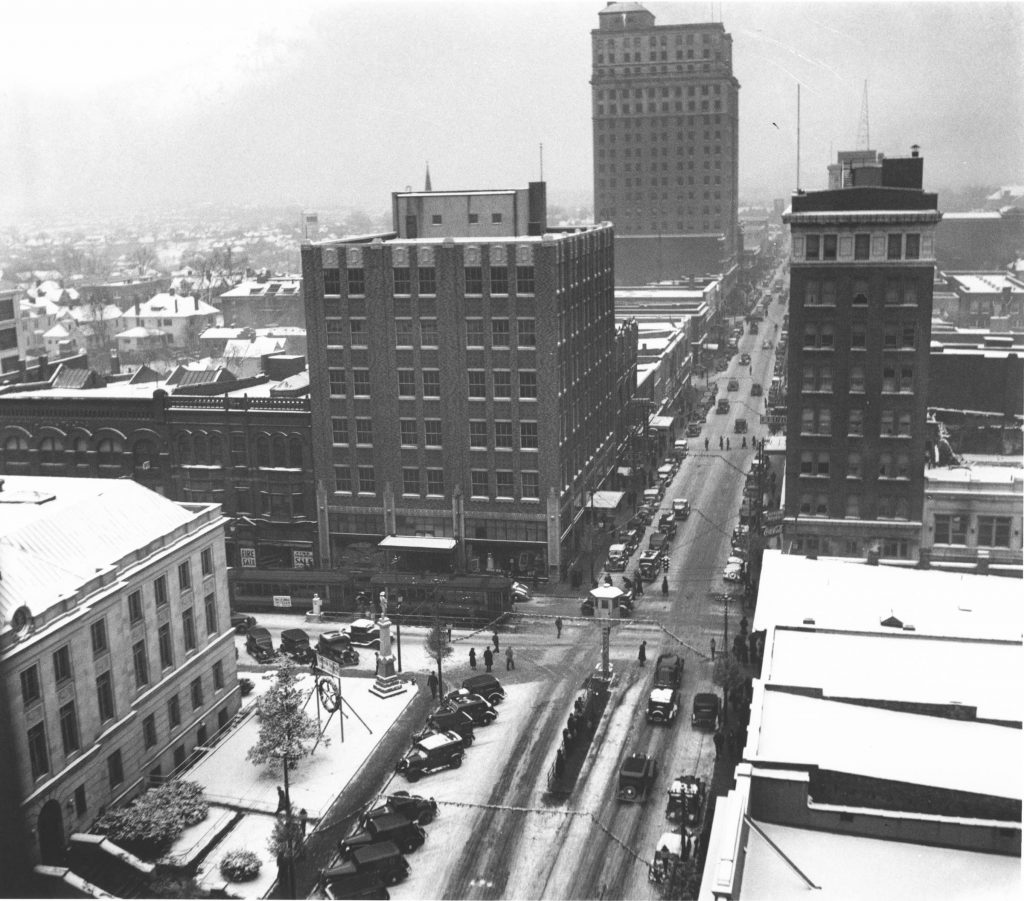
The area around the courthouse continued to grow and by 1935 streetcars could no longer serve all of the city. They were on their way out and finally left the streets at the end of December 1936.
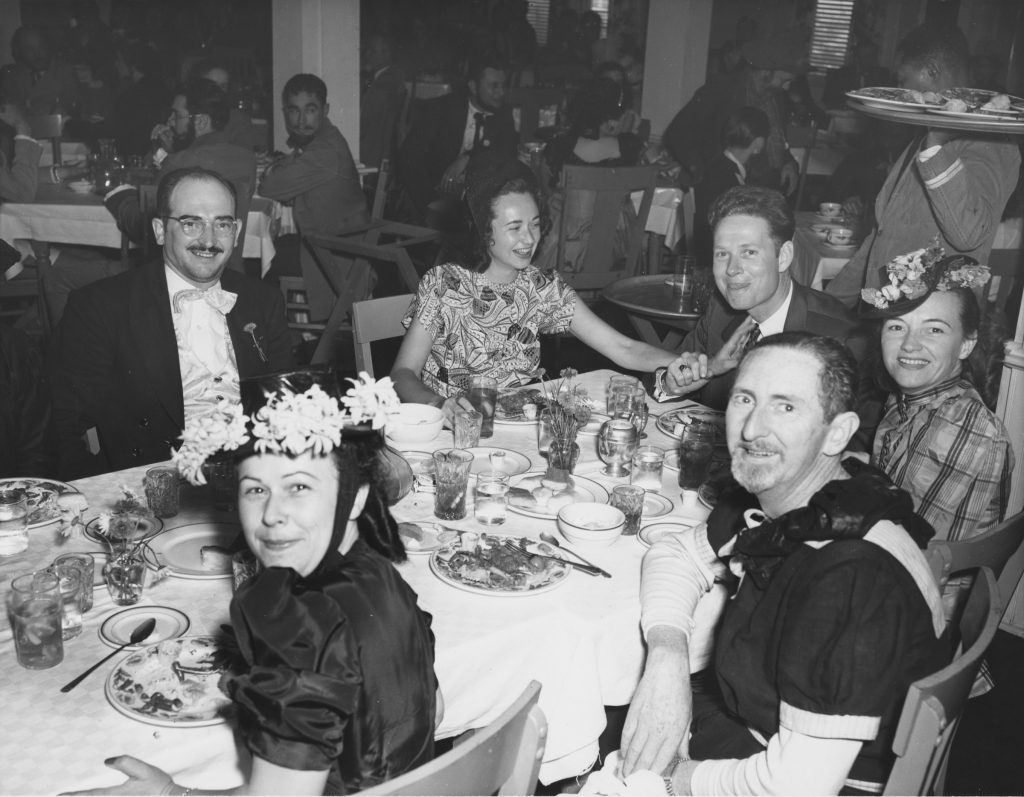
In 1949 Winston-Salem held a year-long celebration for Forsyth County’s 100th birthday. Men formed a bushgrower’s club and planned train excursions and social events to commemorate the ’49ers.
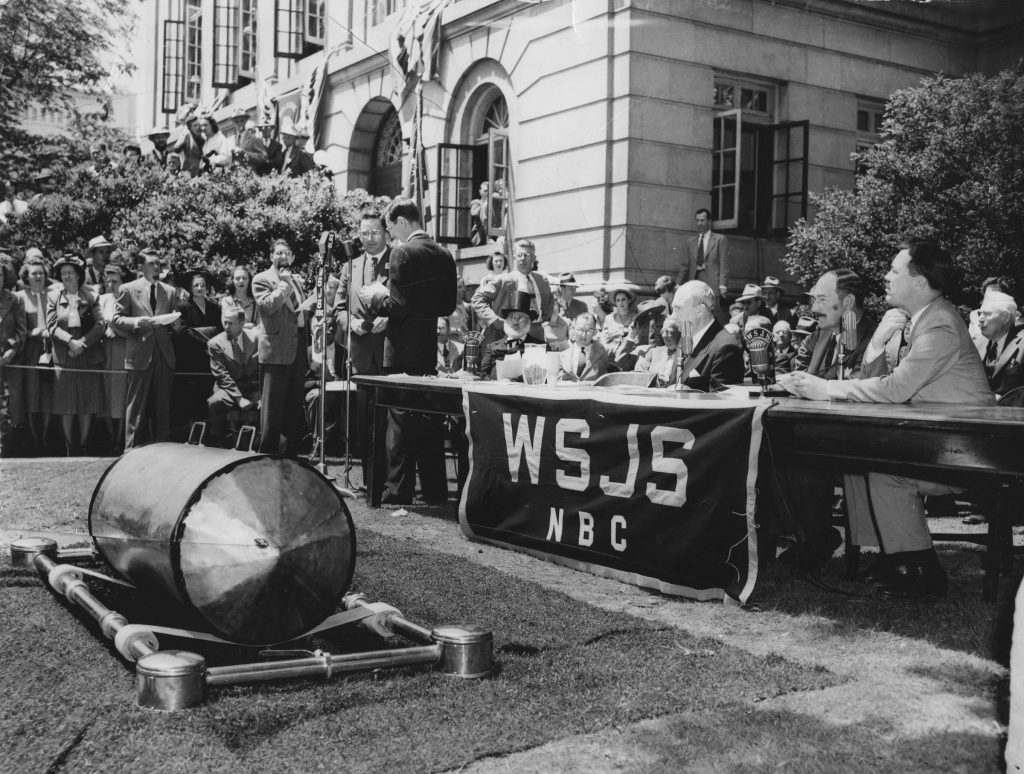
On May 12, 1949, a Centennial Parade through town included a stop at the courthouse to bury a time capsule on the courthouse lawn.
County government grew and some agencies even moved to other locations. The decision was made to expand the building by one-third.
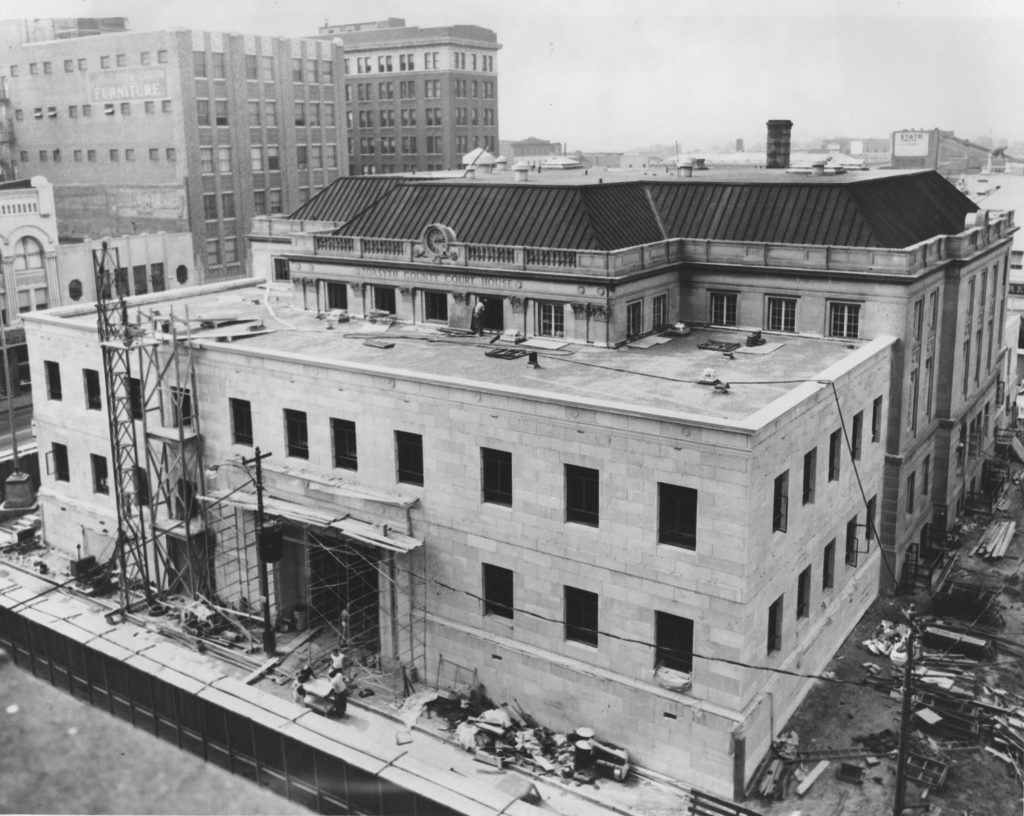
Work began in December 1958 on a two-story addition with basement which extended the building to the edge of the sidewalk.
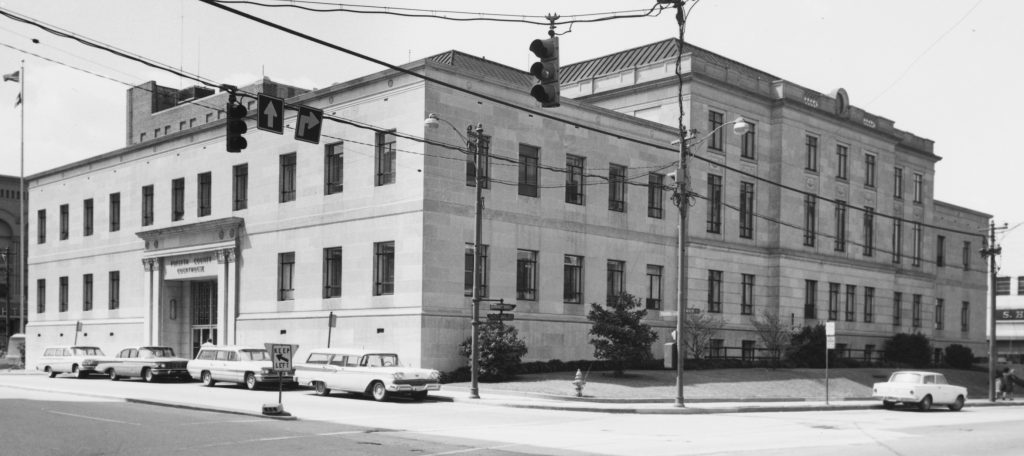
The courthouse had truly consumed the square when the additions were finished in May 1960.
A legal notice appeared in the September 1968 newspapers that the Board of Commissioners was considering moving the site of the county courthouse. In December 1968 a new district court system would be implemented whereby Forsyth County would become the 21st Judicial District. All of the county’s courts would sit in the courthouse. The county’s administrative offices would move to the old Wachovia Bank building, recently vacated and donated to the city and county.
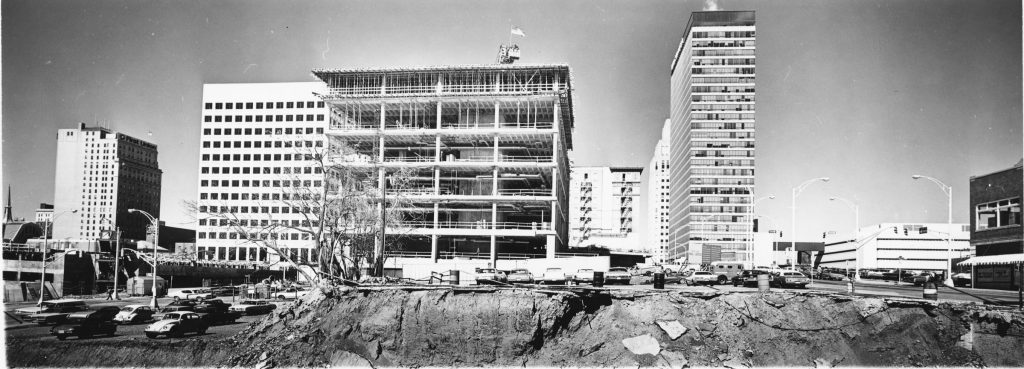
Buildings on South Main Street were demolished and the groundbreaking for the Hall of Justice was held October 19, 1971. The Wachovia building at Third and Main Streets was renamed the Government Center.
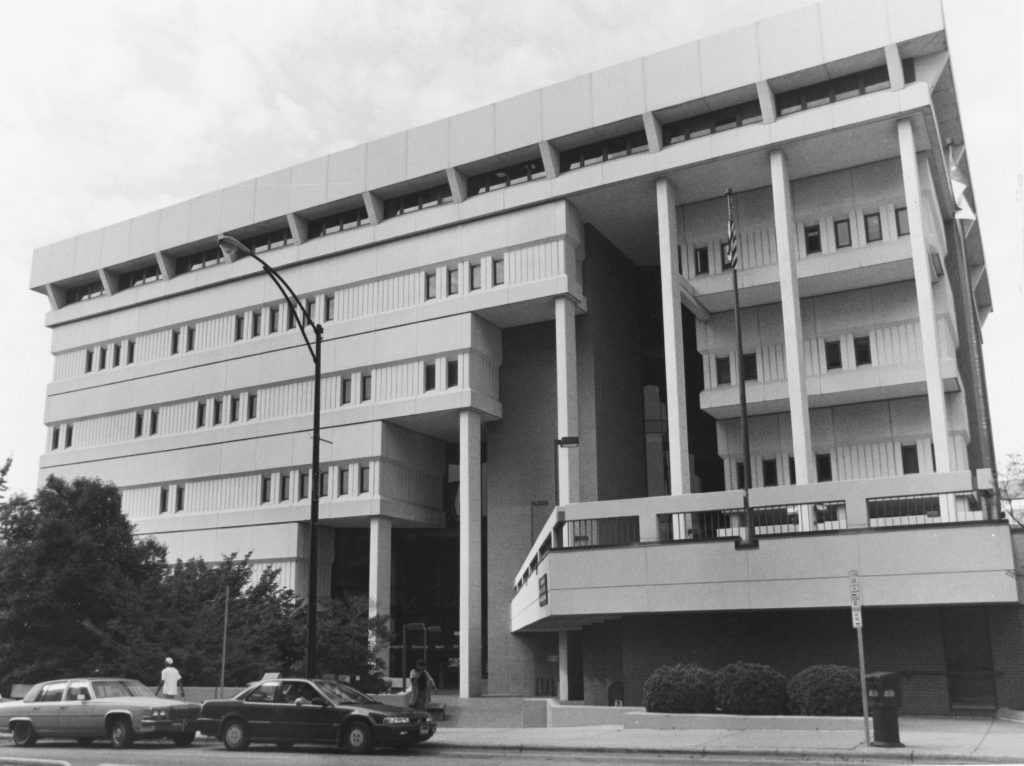
The Hall of Justice was built seven stories tall with 162,000 square feet and cost $6.6 million. When constructed it used 454,000 bricks, over 10,000 yards of poured concrete, and over 3.5 miles of electric cable. Fred W. Butner was the architect.

The Hall of Justice was dedicated on November 13, 1974. It underwent interior renovations in 1998, and there was some shifting of offices to allow for changing needs.
Even after the Hall of Justice opened, some county offices continued to operate from the old courthouse.

Today, the former courthouse is known as 50 West Fourth and is an apartment building with one, two, and three-bedroom units.
Color photo courtesy of Molly Grogan Rawls. Black and white photos courtesy of Forsyth County Public Library Photograph Collection.


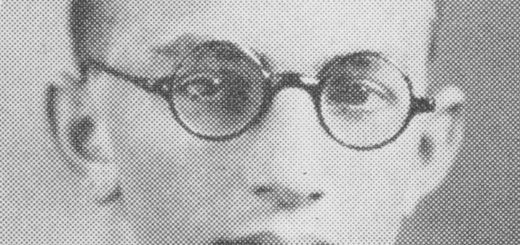
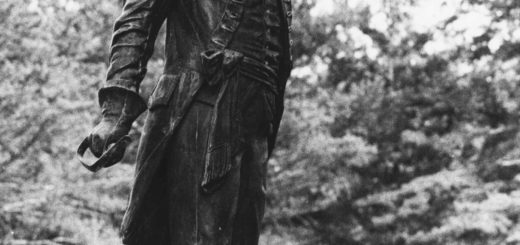
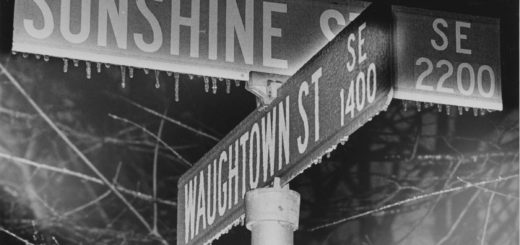
Thank you – love your work!